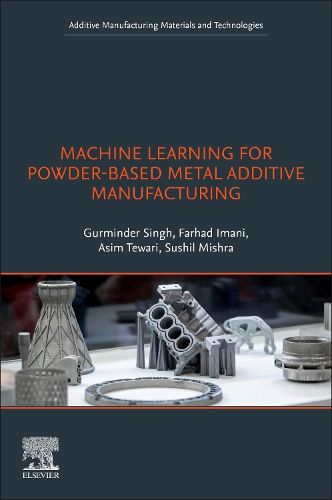Readings Newsletter
Become a Readings Member to make your shopping experience even easier.
Sign in or sign up for free!
You’re not far away from qualifying for FREE standard shipping within Australia
You’ve qualified for FREE standard shipping within Australia
The cart is loading…






Machine Learning for Powder-based Metal Additive Manufacturing outlines machine learning (ML) methods for additive manufacturing (AM) of metals that will improve product quality, optimize manufacturing processes, and reduce costs. The book combines ML and AM methods to develop intelligent models that train AM techniques in pre-processing, process optimization, and post-processing for optimized microstructure, tensile and fatigue properties, and biocompatibility for various applications. The book covers ML for design in AM, ML for materials development and intelligent monitoring in metal AM, both geometrical deviation and physics informed machine learning modeling, as well as data-driven cost estimation by ML.
In addition, optimization for slicing and orientation, ML to create models of materials for AM processes, ML prediction for better mechanical and microstructure prediction, and feature extraction by sensing data are all covered, and each chapter includes a case study.
$9.00 standard shipping within Australia
FREE standard shipping within Australia for orders over $100.00
Express & International shipping calculated at checkout
Machine Learning for Powder-based Metal Additive Manufacturing outlines machine learning (ML) methods for additive manufacturing (AM) of metals that will improve product quality, optimize manufacturing processes, and reduce costs. The book combines ML and AM methods to develop intelligent models that train AM techniques in pre-processing, process optimization, and post-processing for optimized microstructure, tensile and fatigue properties, and biocompatibility for various applications. The book covers ML for design in AM, ML for materials development and intelligent monitoring in metal AM, both geometrical deviation and physics informed machine learning modeling, as well as data-driven cost estimation by ML.
In addition, optimization for slicing and orientation, ML to create models of materials for AM processes, ML prediction for better mechanical and microstructure prediction, and feature extraction by sensing data are all covered, and each chapter includes a case study.